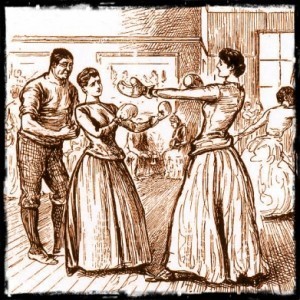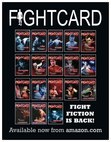Jack Tunney's Blog, page 22
January 11, 2015
AVAILABLE NOW ~ FIGHT CARD MMA: BLOOD FEUD
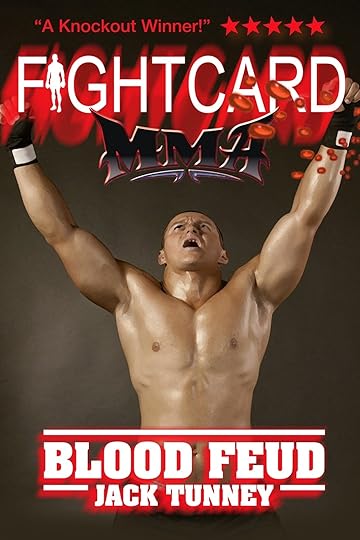
AVAILABLE NOW!
FIGHT CARD NOW: BLOOD FEUD
TIM TRESSLAR
WRITING AS
JACK TUNNEY
Dubai, 2015…David Garrett never could walk away from a fight. Even when a covert mission to nab a terrorist went wrong, leaving fellow CIA agents dead and Garrett holding the bag, he had to be forced to stand down.
Angry and disillusioned, he returned to his native Chicago where he engaged in off-the-books bouts for money, settled scores and made new enemies. Still, the unfinished business eats at him. Then Melissa, his former lover and fellow CIA agent, surfaces. She tells him one of the men responsible for the debacle in Iraq has surfaced. Like Garrett, the man is a fighter and on the card for an exhibition bout in Dubai. Would Garrett come back for one last mission? Garrett never could walk away from a fight. Even one that could kill him…
Published on January 11, 2015 17:45
January 6, 2015
COMING SOON ~ FIGHT CARD MMA: BLOOD FEUD

COMING SOON!
FIGHT CARD NOW: BLOOD FEUD
TIM TRESSLAR
WRITING AS
JACK TUNNEY
Dubai, 2015…David Garrett never could walk away from a fight. Even when a covert mission to nab a terrorist went wrong, leaving fellow CIA agents dead and Garrett holding the bag, he had to be forced to stand down.
Angry and disillusioned, he returned to his native Chicago where he engaged in off-the-books bouts for money, settled scores and made new enemies. Still, the unfinished business eats at him. Then Melissa, his former lover and fellow CIA agent, surfaces. She tells him one of the men responsible for the debacle in Iraq has surfaced. Like Garrett, the man is a fighter and on the card for an exhibition bout in Dubai. Would Garrett come back for one last mission? Garrett never could walk away from a fight. Even one that could kill him…
Published on January 06, 2015 15:19
December 13, 2014
FIGHT CARD ROMANCE: LADIES NIGHT CHRISTMAS
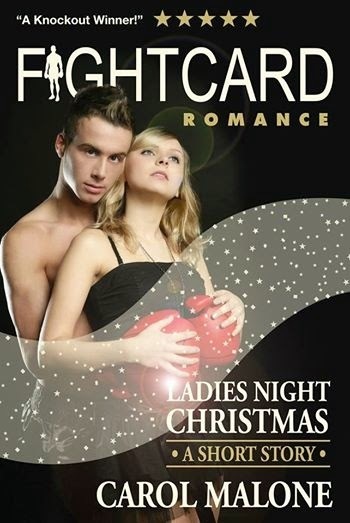
FIGHT CARD ROMANCE
LADIES NIGHT CHRISTMAS
A FIGHT CARD SHORT STORY WITH A TOUCH OF ROMANCE
ONLY 99¢
FIGHT CARD ROMANCE: LADIES NIGHT CHRISTMAS
CHRISTMAS, 1955 … HOLLYWOOD LEGION STADIUM …
Light heavy-weight champ, Jimmy Doherty is boxing Carlo ‘Toro’ Bassani for the Christmas benefit, even though Jimmy is sure Toro is under the thumb of gangster, Mickey Cohen. He doesn’t know if Toro will deck him with a ‘Sunday punch’ in the first round or flop in the third. Even though Jimmy feels sorry for the pug who has cast his lot with the devil, he isn’t sure if he should give this boxer an early Christmas gift of his self-respect, by forcing him to fight like a man, or let Toro kiss the canvas.
Jimmy’s bride, Lindy Doherty, is front row center where she always is when he fights. Not many dames would stay in their man’s corner consistently cheering him on. She’s taking in the action and praying her husband won’t get his head handed to him on a Christmas platter. While waiting to watch Jimmy duke it out in the center ring, she and her six month old son, Patrick, along with her two Precious Roses, meet the brightest star in the Hollywood Christmas sky.
Can Jimmy retain his light heavy-weight title and keep a fellow boxer from accidently ‘falling’ off the San Pedro Pier? And what is Lindy’s special Christmas gift for Jimmy?
Published on December 13, 2014 11:54
December 2, 2014
UP TO SCRATCH ~ WRITING FIGHT CARD SHERLOCK HOLMES: BLOOD TO THE BONE
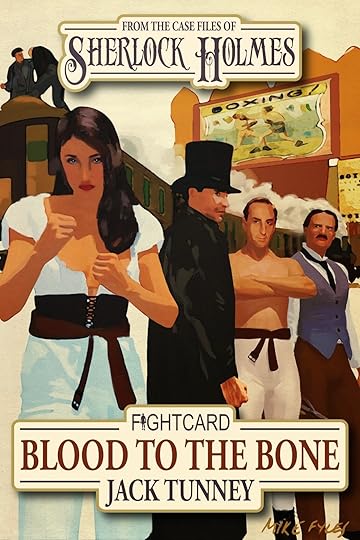
UP TO SCRATCH
ON WRITING
FIGHT CARD SHERLOCK HOLMES
BLOOD TO THE BONE
ANDREW SALMON
Blood to the Bone is the second Fight Card Sherlock Holmes tale to be penned by award winning Sherlockian author Andrew Salmon. His first Fight Card Sherlock Holmes novel, Work Capitol, is also available on as a Kindle e-book and in paperback…
The first novel in the Fight Card Sherlock Holmes series, Work Capitol, presented a number of daunting challenges. Not only did I have to learn how Victorian fighters plied their trade, but also how Sherlock Holmes would put his inimitable spin on the science of pugilism. Added to that was the responsibility of discerning how Watson would describe a fight in the language of the time.
Research and a lot of pondering led me to the solutions. Hearing from readers since the book’s release, I was pleased to see these solutions were met with positive reactions. The book even snagged an award nomination along the way. Holmes fans enjoyed the book, which was a tremendous relief to me and the Fight Card team.
Now, all I had to do was pull it off again! More than that, actually, as the second book could not and should not be just more of the same. No matter how much readers liked Work Capitol, the new one had to be different. We writers don’t like to repeat ourselves.
Well, with the fight stuff all worked out and a first attempt at determining how Watson would narrate a boxing match successfully under my belt, I felt I was slightly ahead of the game. Also, in my research for the first book, I had collected a vast treasure trove of information, trivia, dates, events, names, places, etc.
One of those pieces was supposed to be an important clue for Holmes to discover in Work Capitol – except, when all was said and done, I’d forgotten to use it! So, I had that in my back pocket for the second book as well. Hey, it was a good clue – far too important to throw away.
Next came a read through of Sir Arthur Conan Doyle’s bare knuckle boxing novel, Rodney Stone, to set the tone. The novel provided me with an opportunity to pay homage to Doyle – we must never forget, it is his sandbox modern day Holmes scribblers play in after all.
My tip of the deerstalker takes the form of the pub Holmes, Watson, and my female fighter visit as the Waggon and Horses is visited by Doyle’s characters in his book. What’s funny, when you think about it, is that, really, two sets of his characters visit the pub a century apart in real time. Rodney Stone also gave me the title for my book, Blood to the Bone, from a phrase used to describe a true blue fighter common at the time.
With all of the above in my corner, I felt pretty good about the next book. And the research sealed the deal. We historical fiction writers are like fishermen. We cast our nets upon history in the hope of finding something interesting, something different, unsung, something today’s readers may or may not know about, but we think they’d get a kick out of reading about.
My nets landed smack dab in the middle of the forgotten Victorian female pugilists of the 1800s. As the first book had not featured a female lead, this find immediately struck me as something different yet still staying well within the world of bare knuckle boxing. Endless research showed me the female fight game was a great element, which simply couldn’t be ignored.
But how the heck was Holmes going to fight in the women’s ring? Stumbling upon the tag-team aspect of women’s boxing saved the day. Discovering that couples used to face off against other couples with the ability to tag up like wrestlers and switch partners saved my bacon. Holmes and my female lead could now step up to the scratch line together. Phew!
But what brought them together? Wait a minute! Tag-team couples! What if a husband in one of these tag-teams suddenly disappeared and Holmes and Watson were asked to investigate? Yeah, that would work. Okay, I had Victorian circuses, the forgotten boxing booths of the time, the somewhat obscure history of female bare knuckle boxing, a couple of other little known chapters of history (too spoilerish to talk about here) and a lunar eclipse thrown in for good measure. We were off to the races.
Then tragedy struck.
I had my ducks in a row, the opening scenes playing out in my mind and on my computer screen as I typed away, when my wife’s best friend, Linda Gavin, passed away suddenly in July. Best friend? They had been as close as sisters these last 18 years. My wife’s grief took precedence and the tale was set aside as we struggled through the shock of it. There was the celebration of life memorial to attend as well and this was a moving, unforgettable event – one we should all hope for when our time comes.
It was during this sad time I got the idea to model the female fighter in my Holmes tale after Linda. No small tribute, as Linda was a strong believer in gender equality and would have adored the character of Eby Stokes but, also, her husband, Doug, was a life-long Sherlock Holmes fan.
I had named a character after Doug in two previous Holmes tales a different publisher had brought out in recent years much to Doug’s delight. As one always feel helpless when tragedy strikes another, here was something I could do for Doug, and he was moved when I told him of my plans at the memorial. I told him I would be dedicating the book to Linda as well as changing the name of my female fighter to Eby Stokes – Eby being Linda’s maiden name.
I took things a step further by asking cover artist Mike Fyles if he would be willing to use Linda’s likeness for his depiction of Eby Stokes. Mike’s a great guy and readily agreed. I sent him off a pair of shots of Linda in her youth (boxing is a young man’s and young woman’s game) and he came back with the incredible cover you see on the book.
Things got a little spooky with the cover.
Take a look at his rendition of Eby Stokes. She does indeed resemble Linda, but what he did not know was that she always posed for photos with her hair down in front of her left shoulder. Always – except in the shots I sent Mike, as these had been shots of her in her youth.
I had made no mention of it to Mike, wanting him to be free to go where his considerable talent took him. Yet there is Eby Stokes with her hair hanging down in front of her left shoulder! Coincidence? Something more? We can each come up with our own answers. It sent chills down my spine, that’s all I have to say about it.
As I gradually got back to writing the tale, the book took on more personal importance to me. Holmes tales deal with logic, deduction and adventure, not overburdened by emotion. This being my eighth Holmes tale, I was well versed in this. But now the book was to be my tribute to our departed friend. I had to make it a fitting tribute and I had to create an Eby Stokes to make Linda proud.
Have I succeeded? That’s up to you, dear readers. I gave it everything I had, but the proof is in the reading, and I hope the story entertains and keeps you guessing.
It was a bitter-sweet experience writing Blood to the Bone. Thanks for getting this far with me and I hope you enjoy the book.
Published on December 02, 2014 17:25
THE WOMANLY ART

THE WOMANLY ART
AN OVERVIEW OF WOMEN’S BARE KNUCKLE BOXING
ANDREW SALMON
Blood to the Bone is the second Fight Card Sherlock Holmes tale to be penned by award winning Sherlockian author Andrew Salmon. His first Fight Card Sherlock Holmes novel, Work Capitol, is also available on as a Kindle e-book and in paperback…
Elizabeth Stokes, Anna Lewis, Hattie Stewart, Alice Leary, Hattie Leslie, Hessie Donahue, Cecil Richards, Dolly Adams, Polly Burns – if these names are unfamiliar to you, then keep reading.
The women listed above were just a few of the many great women pugilists of the Victorian age. Not much is known about these accomplished fighters because the press at the time rarely covered their matches unless to either ridicule them or call for their abolishment. Society, for the most part, looked down on female fighters in that bygone age (some would maintain people still do) and, as a result, the matches were rarely advertised. It is only recently that their rich history is gradually being stitched together. The Bare Knuckle Boxing Hall of Fame just inducted its first batch of female fighters this past July.
Women fighters have been around since ancient times, but for the sake of this overview we’ll limit our focus to the dawn of female prize fighting. The Hall of Fame’s coordinator, Scott Burt, tells us it all began with Elizabeth Stokes. As the winner of the first ever recorded female bare knuckle boxing fight in 1722, Stokes fought Hannah Hyfield for a prize of three guineas. The women fought with a half a crown in one fist. The first to drop the money, lost the fight. This set a precedent for future fights. This was a smart addition to the women’s Fancy, as the closed fist cut down on scratching and gouging.
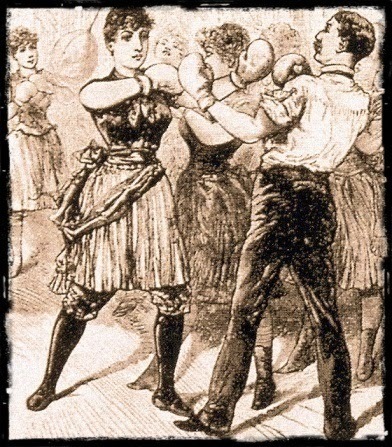
Much like its male counterpart, women’s bare knuckle boxing began with very different rules. The womanly art allowed hair pulling, kicking, kneeing, scratching and gouging to all parts of the body. Wrestling throws were also legal, making the sport more a primitive form of mixed martial arts than simply boxing. As such, it displayed a marked similarity to the Boxe Francaise or Savate fighting, which combined boxing with a variety of kicks using both heel and toe.
The fights were brutal and savage affairs. As a result, the women were often severely injured, and some died in the ring. Usually trained by men, either their husbands or fellow pugilists, the women fought men as well as each other, sometimes winning despite the tremendous risks. There were exceptions, such as the time Hessie Donahue knocked out John L. Sullivan during an exhibition bout when Sullivan angered her by accidently hitting her too hard.
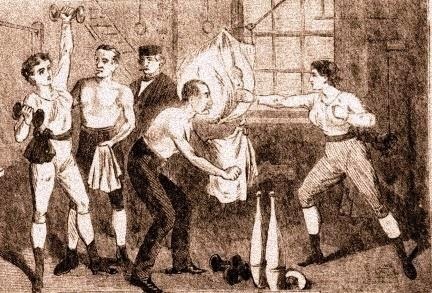
The women often boxed bare chested. This served two functions. The first served the promoters with the obvious salacious draw of sweaty, topless women punching away at each other, but there was a sound reason for this as well. Without antibiotics of any kind, the risk of infection ran high. Dirty fabric pressed into open cuts incurred during a fight could mean death for a fighter. And injuries did not just result from a fist or boot heel. There was the very real risk of the various wires found in female clothing of the time puncturing the skin as well.
Women’s bare knuckle boxing became popular on both sides of the Atlantic as the eighteenth century drew to a close despite being considered indecent and unladylike by many. Women’s boxing classes were held in gymnasiums everywhere, but catered mostly to the upper class.
As the sport was open to all comers and substantial prizes were to be had. This prize money far exceeded what the lower or middle class women could earn at other jobs. As a result, despite the risk, the temptation to toe the line was, for many, the only avenue out of poverty. For others, it was an opportunity to escape the confines society placed on them, to be strong, independent and capable.
By the 1880s, women’s boxing flourished in dance halls and at fairgrounds where women put on boxing displays and/or sparring with fair goers and engaged in tag–team fights where male and female teams (often husband and wife) squared off against each other with a tag to switch partners. As the 19th century drew to a close, the sport, still frowned upon by the press, gained more respectability. Bare knuckles eventually gave way to gloves as the Queensberry Rules were put in place.
The sport continued into the 20th century and was even an exhibition sport at the St. Louis World’s Fair/Olympics in 1904. It was also considered an excellent way for a young lady to stay healthy and safe well into the 1950s, though by then, the sport had lost most of its ferocity. By the 1970s, women boxers began to fight in greater earnest to secure the rights and opportunities their male counterparts enjoyed.
If you want to delve deeper into the world of female bare knuckle boxing, check out the Hall’s website above or pop over to this Russian site, Female Single Combat Club, which offers both English and Russian versions of its pages. Here they explore the history in depth and I’m indebted to them for the research materials I found at the site.
Published on December 02, 2014 17:19
WOMEN PUGILISTS GET THEIR DUE

WOMEN PUGILISTS GET THEIR DUE
VICTORIAN FEMALE BOXERS ENTER HALL OF FAME
ANDREW SALMON
Blood to the Bone is the second Fight Card Sherlock Holmes tale to be penned by award winning Sherlockian author Andrew Salmon. His first Fight Card Sherlock Holmes novel, Work Capitol, is also available on as a Kindle e-book and in paperback…
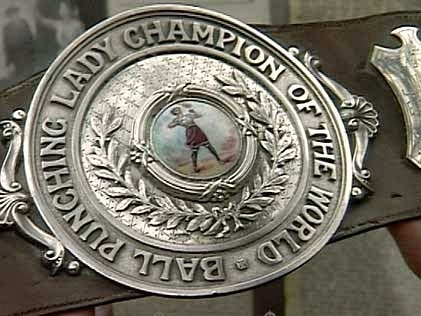
The Bare Knuckle Boxing Hall of Fame in Belfast, New York held an induction ceremony on July 12th, 2014, where the great, unsung female boxing greats of the Victorian age took their place amongst the legendary male fighters of yesteryear as part of the rich history of the sport.
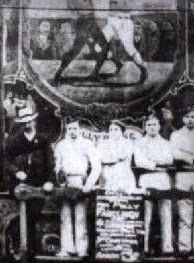
Elizabeth Wilkinson (Stokes): Winner of first ever recorded female bare knuckle fight in 1722.
Anna Lewis: Staged first Women’s Championships, brought publicity to the sport in the 1880s.
Hattie Stewart: First Female Bare Knuckle World Champion, 1884.
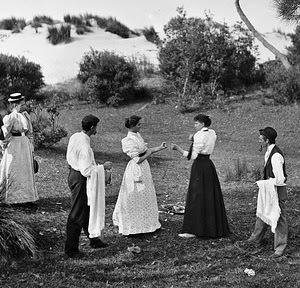
Hattie Leslie: First American Championess, 1888.
Alice Leary: A six-foot slugger, athlete, was 52-0 w/24 knockouts before losing to Hattie Leslie.
Hessie Donahue: Knocked out John L. Sullivan in 1892.
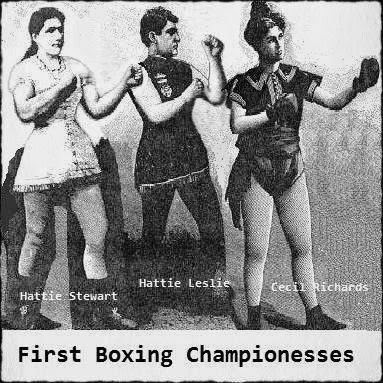
These great fighters, along with a selection of modern day women pugilists, join the ranks of past inductees, including John L. Sullivan, Jem Mace, James Figg, Jack Dempsey and dozens of others.
Published on December 02, 2014 17:12
November 24, 2014
COMING IN DECEMBER 2014 ~ FIGHT CARD SHERLOCK HOLMES 2!
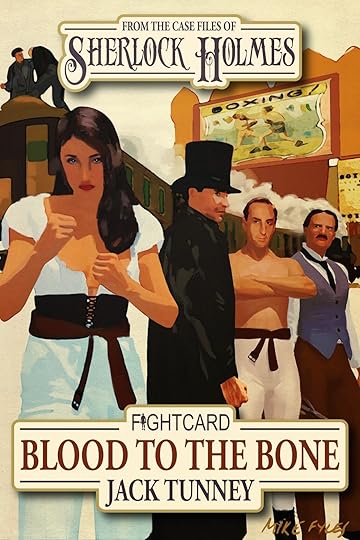
COMING DECEMBER 2014
A NEW TWO-FISTED
SHERLOCK HOLMES TALE
FIGHT CARD SHERLOCK HOLMES: BLOOD TO THE BONE
Deptford, England, 1888 … Richard Stokes – one half of a tag-team carnival boxing duo – has vanished, leaving his loving wife, pugilist Eby Stokes, homeless and penniless with only questions and no answers. A mutual friend asks Holmes to look into the disappearance. Watson believes the matter to be a common case of abandonment, and Holmes’ interest merely an excuse to try his hand in the boxing booths of a visiting circus. However, when they are almost killed, Holmes and Watson’s only remaining clue to Stokes disappearance harkens back to a boxing club disbanded in shame more than sixty years earlier.
Why did Stokes abandon his wife? What possible significance could the long extinct Pugilistic Club have in the matter? Who is behind the fire that almost took the lives of Holmes and Watson? Joining forces with Eby Stokes, Holmes and Watson are determined to find the answers.
The kaleidoscope lights of the carnival hide many secrets, including a threat to the foundation of the British Empire. The game’s afoot and, this time, it’s a matter of life and death in and out of the ring…
AWARD WINNING AUTHOR ANDREW SALMON
WRITING AS
JACK TUNNEY
Published on November 24, 2014 11:27
November 21, 2014
COMING IN DECEMBER ~ FIGHT CARD SHERLOCK HOLMES!

COMING DECEMBER 2015
A NEW TWO-FISTED
SHERLOCK HOLMES TALE
FIGHT CARD SHERLOCK HOLMES: BLOOD TO THE BONE
Deptford, England, 1888 … Richard Stokes – one half of a tag-team carnival boxing duo – has vanished, leaving his loving wife, pugilist Eby Stokes, homeless and penniless with only questions and no answers. A mutual friend asks Holmes to look into the disappearance. Watson believes the matter to be a common case of abandonment, and Holmes’ interest merely an excuse to try his hand in the boxing booths of a visiting circus. However, when they are almost killed, Holmes and Watson’s only remaining clue to Stokes disappearance harkens back to a boxing club disbanded in shame more than sixty years earlier.
Why did Stokes abandon his wife? What possible significance could the long extinct Pugilistic Club have in the matter? Who is behind the fire that almost took the lives of Holmes and Watson? Joining forces with Eby Stokes, Holmes and Watson are determined to find the answers.
The kaleidoscope lights of the carnival hide many secrets, including a threat to the foundation of the British Empire. The game’s afoot and, this time, it’s a matter of life and death in and out of the ring…
AWARD WINNING AUTHOR ANDREW SALMON
WRITING AS
JACK TUNNEY
Published on November 21, 2014 08:39
November 7, 2014
FIGHT CARD UPDATE NOVEMBER 2014

FIGHT CARD UPDATE NOVEMBER 2014
I am delighted with the strength of the final two Fight Card titles for 2014. As we wrap-up three years of monthly novelettes with 40 published titles (including two Fight Card charity anthologies), the stories in the series are as vibrant and hard-hitting as when we started.
First up in November is The Iron Fists of Ned Kelly, the third Fight Card novel from the battered typewriter of our man from the land down under, David Foster (King of the Outback, Rumble in the Jungle). This is a piece of historical fiction – featuring Australia’s infamous outlaw, Ned Kelly – which David was destined to write. A rip-snorting true tale of a man done wrong who has a chance to even the score the best way he know how – with his fists.
The Iron Fists of Ned Kelly also features a knockout cover from illustrator Mike Fyles, who has also turned in another dynamite cover for our second Fight Card Sherlock Holmes outing from Andrew Salmon, Bad to the Bone, which will be our December Fight Card title.
FIGHT CARD: THE IRON FISTS OF NED KELLY
“I wish to acquaint you with some occurrences of the present past and future.” Edward Kelly – The Jerilderie Letter 1879
The story of Australia’s ironclad outlaw, Ned Kelly, has been told countless times in film, book, and song. The shootout at Stringybark Creek and the infamous siege at Glenrowan are events which shaped the nation – but there is more to Ned’s story, including the character defining, bareknuckle, scrap with feared bar-room brawler, Isaiah ‘Wild’ Wright.
Ned was only sixteen when he rode into the township of Greta on a horse loaned to him by Wright. Ned had no idea the horse was stolen, but he was still arrested, beaten, and sentenced to three years hard labor.
Ned can’t get those years back, but he can make the horse thief pay for his deception. With honour and justice at stake, two of the hardest men of all time will come to scratch in a battle for the ages.
A story of betrayal, revenge, and ultimately friendship, The Iron Fists of Ned Kelly is another rollicking tale from the author of King of the Outback.
Along with his Fight Card entries, David is also the author – under his James Hopwood pseudonym – of two novels (The Librio Defection / The Danakil Deception) featuring swinging sixties neophyte British agent Jarvis Love. Both are available from Amazon and are must reads for anyone who enjoys their spy fiction with the cool vibe of the swinging sixties when martinis were served shaken not stirred.
Special thx this month to Bobby Nash for his efforts in providing FaceBook banners for so many of our titles …
Till next month … Keep punching …
Published on November 07, 2014 13:21
November 4, 2014
THE IRON OUTLAW ~ WRITING THE IRON FISTS OF NED KELLY

THE IRON OUTLAW
WRITING THE IRON FISTS OF NED KELLY
As we approach the finale of the Fight Card series’ third year of monthly two-fisted tales, I am still filled with excitement when a new novelette hits my in box to be edited – especially when the story is as special as our November title, The Iron Fists of Ned Kelly.
Whether he is writing the retro-spy novels featuring Jarvis Love (The Librio Defection, The Danakil Deception), or tales of Foreign Legionnaire Mace Bullard (Honor of the Legion, Sahara Six) – all under his James Hopwood pseudonym – or turning out great Fight Card stories (King of the Outback, Rumble in the Jungle) – writing as Jack Tunney – David Foster has arguably established himself as the reigning master of Australian pulp.
Now David returns to the Fight Card line-up with a yarn of historical fiction. Steeped in the legend of the notorious Australian bushman, Ned Kelly, the story is a rollicking anecdote of a man whose exploits shaped the spirit of a nation.
I asked David to share his thought process behind The Iron Fists of Ned Kelly…
FIGHT CARD: THE IRON FISTS OF NED KELLY
My latest Fight Card novel, The Iron Fists of Ned Kelly is a work of fact based fiction. The key word being fiction. There is very little in the way of genuine information about the fight between Ned Kelly and ‘Wild’ Wright. It has even been said the fight never occurred – or possibly was a much smaller affair than the legend surrounding it would now suggest. Therefore, the story is a work of speculative fiction based on the legend, rather than any cold hard fact.
When the idea was floated to write a different kind of Fight Card book, one based on real characters, I immediately knew I wanted to write about Ned Kelly. This is no exaggeration. The email from Fight Card series creator, Paul Bishop, came through to me as I was about to board a train to work. The journey takes sixteen minutes. In that time as the train rattled on, tapping at my phone, I knocked out a one page synopsis of the story and sent it back. Paul approved it on the spot. That easy.
But why Ned Kelly? When I think back, it appears tales of bushrangers and highwaymen have always been a part of my life. I remember as a tot, one of the first stories read to me – as I was too young to read – was Midnite: The Story of a Wild Colonial Boy by Randolph Stow (published in 1967). Set in Colonial times, Midnite was somewhat of a dimwitted young lad who falls into a life of crime, masterminded by his talking Siamese cat – named Khat – and abetted by his horse, Red Ned. I was magicked away to another world and, in my opinion, it remains one of the best children’s books ever written.
By 1978, from across the pond, I was hooked on the London Weekend Television series, Dick Turpin, featuring Richard O’Sullivan as the famous highwayman. Then in 1980 came the Australian television series, The Last Outlaw. It starred John Jarratt as Ned Kelly. The series was written, after painstaking research for authenticity, by noted Kelly scholar Ian Jones (author of Ned Kelly: A Short Life).
The series was epic in scope, and showed there was a lot more to the Kelly story than simply an outlaw in armor. Once again, this time through the magic of television, I was transported to another time and place. It is also, as you may have guessed, where I first came to learn of the fight between Ned and Isaiah Wild Wright (as played in the TV series by David Bradshaw).
By today’s film and television standards, the fight depicted was pretty crude, but as it was the climax of the first episode, and richly displayed Kelly’s strength of character, the sequence still lingers in my mind thirty-plus years later.
Since then, Ned’s story has been retold many times in books, film, and documentaries, each of them adding to the myth. Absorbing all this information, it seemed inevitable I would write a story about his exploits. Thankfully, through the Fight Card series, I was given the opportunity to look at a unique and character-defining episode in Ned’s life that is often overlooked.
I hope you enjoy reading The Iron Fists of Ned Kelly as much as I enjoyed researching and writing it.
David Foster (writing as Jack Tunney)
Melbourne, Australia
October 2014
Published on November 04, 2014 21:58

